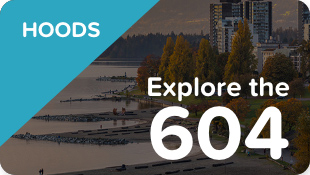
Photo: Vancouver Whale Watch
Seeing whales in their natural habitat is breathtaking. Whale watching companies in Vancouver provide very memorable experiences, in addition to furthering knowledge and conservation of marine wildlife.
Vancouver Whale Watch is one company that is deeply passionate about the West Coast eco-system. In 1998, Cedric Towers founded an eco-tourism business named Captain Zodiac, the first to offer tours from the mainland. Even though many thought it wasn’t feasible, Towers believed that, with the right boats, whale watching would be spectacular and safe here. He purchased a 12-passenger zodiac and a shuttle bus, and began offering tours from picturesque Steveston in Richmond.
“Now 25 years later, we have two large zodiacs and two small zodiacs and 3 shuttle buses,” says Tammy Taylor, General Manager of Vancouver Whale Watch. All the zodiacs (the large made by North Vancouver’s ABD Shipping and the smaller by Titan Boats) are specifically designed for viewing marine mammals, thereby giving guests the best experience possible. Roofs for the large zodiacs are removed mid-June (dependent on weather) so that they become “open air.” Roughly mid-September, these vessels become semi-covered with large windows that slide up as another way of optimizing viewing.

Photo: Vancouver Whale Watch
The company offers tours April 1 to October 31, seven days a week. Taylor feels that Vancouver offers incredible opportunities for whale watching. “We are very fortunate to see both Orcas and Humpbacks in these waters just outside the Fraser River and Gulf Islands,” she says. Vancouver visitors can enjoy all the sights, restaurants, and nightlife of the city while being in close proximity to amazing marine wildlife.
Vancouver Whale Watch offers tours that last from 3 to 5 hours, with a success rate of 95-98%. The time varies depending on where the whales can be found on that particular day. In the event guests don’t see an orca or humpback whale, they can keep on going on their trips until they do see a whale. This is a lifetime offer, with no expiry date.

Photo: Vancouver Whale Watch
The experience begins with a shuttle pick-up for those staying downtown. “We have knowledgeable drivers that provide commentary for our guests on their way out to the [Steveston] village—so they get a little bit of a city tour on their way,” Taylor explains. The shuttle arrives at Vancouver Whale Watch’s office in Steveston, a historic fishing village, once home to numerous canneries and now a bustling port for numerous commercial fishing vessels.
Vancouver Whale Watch’s location makes it particularly well suited for whale watching. “We depart from the South arm of the Fraser River, known as the gateway to the whales, as this is the closest departure point to where the areas are that we generally find whales,” Taylor says. The routes that the zodiacs take vary every day since the whales are continually travelling, up to 100 kilometres in a single day. The zodiacs will sometimes go to the Canadian Gulf Island; other times, to the American San Juan Islands.

Vancouver: Vancouver Whale Watch
In addition to typically seeing Orcas (Transient Killer Whales) and large Humpback whales, guests will have the chance to view other marine wildlife, such as sea lions, seals, porpoises, bald eagles, and more. “And always stunning scenery!” says Taylor.
Taylor emphasizes that Vancouver Whale Watch is not just about viewing marine wildlife; the company prioritizes education. “Guests will learn about the areas they travel in and receive lots of information about the wildlife they see. Every tour has a Wildlife Guide onboard to talk about everything they are seeing and educate the guests about the wildlife and surrounding areas,” Taylor says.
Respect, safety, and conservation are really important values for Vancouver Whale Watch. First of all, the vessels are water jet powered so they are quiet and safe for marine life. “We have been part of the Pacific Whale Watching Association for 25 years, and this association was, in fact, the first to put regulations in place regarding distance kept from the whales when viewing and slow approach and departure from whales. And now, the government has adopted these guidelines and made it law, so that is wonderful,” says Taylor.
The vessels maintain a distance of 200 metres from Orcas and 100 metres from Humpbacks, which provides guests with a great view while maintaining respect and safety for these magnificent mammals. Previous guests have commented on how appreciative they were of how Vancouver Whale Watch always made sure to give wildlife their space during their trips. The company also collects a $4 conservation per person, which goes to the Centre for Whale Research, salmon enhancement projects, and other marine research projects.
Taylor says that all staff—those operating the shuttle service, crew on the vessels, and office staff—are deeply passionate about marine wildlife and the customer experience. Many guests have been dreaming for ages about seeing orcas and humpbacks in the wild, and finally realizing that goal is extremely emotional for them. “We’re grateful to get to share that experience with someone—it’s a trip of a lifetime,” she says. Taylor says that staff love getting to know people from around their world and hearing stories of their times on the water.
In addition to Vancouver Whale Watch’s friendly and knowledgeable staff, it is nature itself that makes each trip so unique and rewarding for everyone on board. “We truly hope our guests walk away with an appreciation of seeing animals in their natural habitat and that every day is different on the water and to appreciate what nature gives us,” Taylor says.
More information on Vancouver Whale Watch and its trips can be found here.
There are many other companies in Vancouver that also offer responsible, conservation-focused whale watching experiences. These include Prince of Whales, Wild Whales Vancouver, and Steveston Seabreeze Adventures.
















